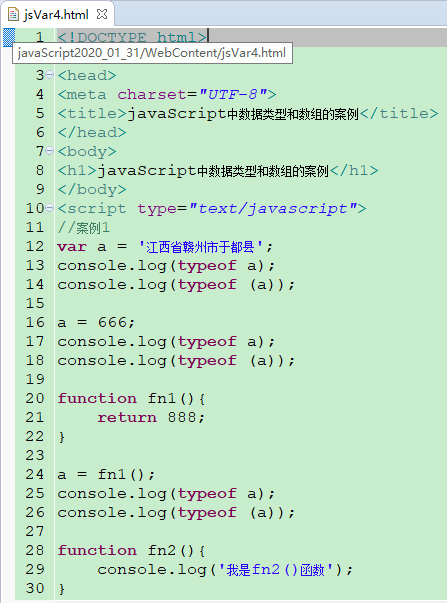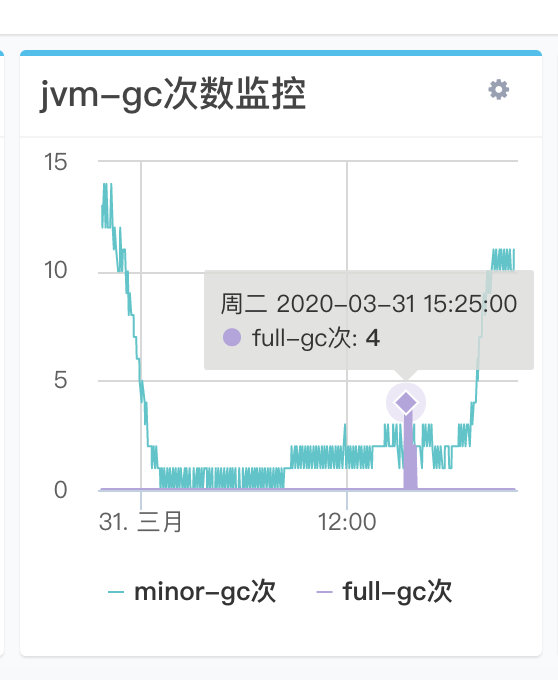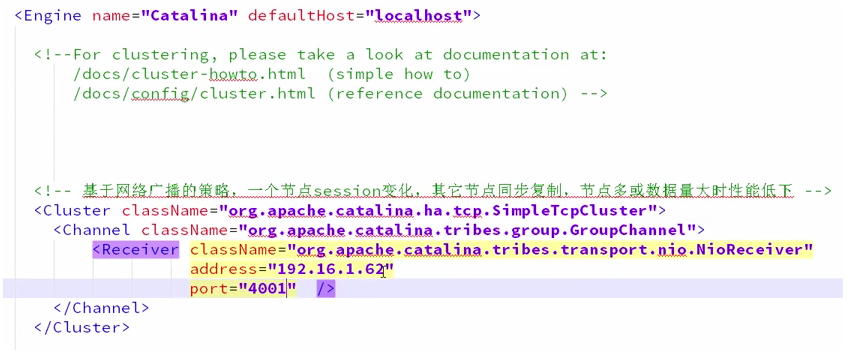【Spring基础】IOC使用Setter依赖注入
前言
Github:https://github.com/yihonglei/thinking-in-spring(spring-ioc-xml工程)
如果Spring使用XML配置形式,最常用有两种依赖注入方式:setter注入和构造器注入。
这里主要讨论基于setter方法的依赖注入。
一 Setter注入Bean
1、创建一个HelloService接口
package com.jpeony.spring.common;/*** @author yihonglei*/public interface HelloService {void sayHello(String name);}
2、HelloServiceImpl实现类
package com.jpeony.spring.common;/*** @author yihonglei*/public class HelloServiceImpl implements HelloService {@Overridepublic void sayHello(String name) {System.out.println("hello:" + name);}}
3、创建一个SelfIntroductionService(自我介绍)接口
package com.jpeony.spring.setter;/*** @author yihonglei*/public interface SelfIntroductionService {void selfIntroduction();}
4、SelfIntroductionServiceImpl实现类
package com.jpeony.spring.setter;import com.jpeony.spring.common.HelloService;/*** @author yihonglei*/public class SelfIntroductionServiceImpl implements SelfIntroductionService {private HelloService helloService;/*** setter方式注入Bean*/public void setHelloService(HelloService helloService) {this.helloService = helloService;}@Overridepublic void selfIntroduction() {// 向大家打招呼helloService.sayHello("大家好!");}}
5、Spring XML配置applicationContext-Setter-Bean.xml
<?xml version="1.0" encoding="UTF-8"?><beans xmlns="http://www.springframework.org/schema/beans"xmlns:xsi="http://www.w3.org/2001/XMLSchema-instance"xsi:schemaLocation="http://www.springframework.org/schema/beanshttp://www.springframework.org/schema/beans/spring-beans.xsd"><!--Bean声明:该bean类似于javaConfig中的@Bean注解;用于创建bean的类通过class属性来指定,并且需要使用全限定的类名。通过id指定bean的ID。如果不显示指定,默认使用class的全限定名进行命名。eg:HelloServiceImpl#0,其#0是一个计数器的形式,用来区分相同类型的其他bean。使用自动化命名很方便,但是没有多少实际用处,还是建议自己给bean显示设定ID。--><bean id="helloService" class="com.jpeony.spring.common.HelloServiceImpl"/><!-- setter注入bean --><bean id="selfIntroductionService" class="com.jpeony.spring.setter.SelfIntroductionServiceImpl"><property name="helloService" ref="helloService"/></bean></beans>
6. 测试setter注入Bean
package com.jpeony.spring;import com.jpeony.spring.setter.SelfIntroductionService;import org.junit.Test;import org.springframework.context.ApplicationContext;import org.springframework.context.support.ClassPathXmlApplicationContext;/*** 测试setter注入(bean、字面量、集合)** @author yihonglei*/public class SetterTest {/*** 注入bean** @author yihonglei*/@Testpublic void testBean() {// 根据spring配置文件创建应用上下文ApplicationContext context =new ClassPathXmlApplicationContext("applicationContext-Setter-Bean.xml");// 从容器中获取beanSelfIntroductionService selfIntroductionService= (SelfIntroductionService) context.getBean("selfIntroductionService");// 调用自我介绍selfIntroductionService.selfIntroduction();}}
7. 运行结果
hello:大家好!
总结:
自我介绍类中SelfIntroductionServiceImpl,通过set方法注入bean,
在XML中通过
二 Setter方法注入字面量
setter方法除了上面应用于注入bean之外,还可以用于注入字面量。
1、创建一个实体类
package com.jpeony.spring.entity;/*** 个人信息(setter注入使用)** @author yihonglei*/public class PersonSetter {/*** 姓名*/private String name;/*** 性别*/private String sex;/*** 年龄*/private int age;/*** 兴趣爱好*/private String hobby;public String getName() {return name;}public void setName(String name) {this.name = name;}public String getSex() {return sex;}public void setSex(String sex) {this.sex = sex;}public int getAge() {return age;}public void setAge(int age) {this.age = age;}public String getHobby() {return hobby;}public void setHobby(String hobby) {this.hobby = hobby;}}
2、spring配置applicationContext-Setter-Constant.xml
<?xml version="1.0" encoding="UTF-8"?><beans xmlns="http://www.springframework.org/schema/beans"xmlns:xsi="http://www.w3.org/2001/XMLSchema-instance"xsi:schemaLocation="http://www.springframework.org/schema/beans http://www.springframework.org/schema/beans/spring-beans.xsd"><!-- setter注入字面量 --><bean id="person" class="com.jpeony.spring.entity.Person"><property name="name" value="tom"/><property name="sex" value="男"/><property name="age" value="26"/><property name="hobby" value="爱好女人,哈哈!开个玩笑!"/></bean></beans>
3、测试setter注入字面量
package com.jpeony.spring;import com.jpeony.spring.entity.PersonSetter;import org.junit.Test;import org.springframework.context.ApplicationContext;import org.springframework.context.support.ClassPathXmlApplicationContext;/*** 测试setter注入(bean、字面量、集合)** @author yihonglei*/public class SetterTest {/*** 注入字面量** @author yihonglei*/@Testpublic void testConstant() {// 根据spring配置文件创建应用上下文ApplicationContext context =new ClassPathXmlApplicationContext("applicationContext-Setter-Constant.xml");// 从容器中获取beanPersonSetter person = (PersonSetter) context.getBean("personSetter");// 打印个人属性System.out.println(" 姓名: " + person.getName() +" 性别: " + person.getSex() +" 年龄: " + person.getAge() +" 兴趣爱好: " + person.getHobby());}}
4、运行结果
姓名: tom 性别: 男 年龄: 26 兴趣爱好: 爱好女人,哈哈!开个玩笑!
三 Setter方法注入集合
setter方法还可以用来注入集合,直接看看实例。
1、创建集合类
package com.jpeony.spring.entity;import java.util.Arrays;import java.util.List;import java.util.Map;import java.util.Set;/*** Spring 注入集合** @author yihonglei*/public class Collection {private Set<String> set;private List<String> list;private Map<String, String> map;private String[] array;public Set<String> getSet() {return set;}public void setSet(Set<String> set) {this.set = set;}public List<String> getList() {return list;}public void setList(List<String> list) {this.list = list;}public Map<String, String> getMap() {return map;}public void setMap(Map<String, String> map) {this.map = map;}public String[] getArray() {return array;}public void setArray(String[] array) {this.array = array;}@Overridepublic String toString() {return "Collection{" +" set=" + set +", list=" + list +", map=" + map +", array=" + Arrays.toString(array) +'}';}}
2、Spring xml配置applicationContext-Setter-List.xml
<?xml version="1.0" encoding="UTF-8"?><beans xmlns="http://www.springframework.org/schema/beans"xmlns:xsi="http://www.w3.org/2001/XMLSchema-instance"xsi:schemaLocation="http://www.springframework.org/schema/beans http://www.springframework.org/schema/beans/spring-beans.xsd"><!-- setter注入集合 --><bean id="collection" class="com.jpeony.spring.collection.Collection"><!-- Set集合的属性注入 --><property name="set"><set><value>set1</value><value>set2</value><value>set3</value></set></property><!-- List集合的属性注入 --><property name="list"><list><value>list1</value><value>list2</value><value>list3</value></list></property><!-- 数组的注入 --><property name="array"><list><value>array1</value><value>array1</value><value>array1</value></list></property><!-- Map集合的属性注入 --><property name="map"><map><entry key="key1" value="map1"></entry><entry key="key2" value="map2"></entry><entry key="key3" value="map3"></entry></map></property></bean></beans>
3、测试Setter注入集合
package com.jpeony.spring;import com.jpeony.spring.entity.Collection;import org.junit.Test;import org.springframework.context.ApplicationContext;import org.springframework.context.support.ClassPathXmlApplicationContext;/*** 测试setter注入(bean、字面量、集合)** @author yihonglei*/public class SetterTest {/*** 注入集合** @author yihonglei*/@Testpublic void testList() {// 根据spring配置文件创建应用上下文ApplicationContext context =new ClassPathXmlApplicationContext("applicationContext-Setter-List.xml");// 从容器中获取beanCollection collection = (Collection) context.getBean("collection");// 打印个人属性System.out.println("Setter注入集合:" + collection.toString());}}
4、运行结果
Setter注入集合:Collection{ set=[set1, set2, set3], list=[list1, list2, list3], map={key1=map1, key2=map2, key3=map3}, array=[array1, array1, array1]}
四 总结
Spring setter注入可用于注入bean、字面量、集合;
如果是新项目,建议使用Spring注解,因为一堆一堆的xml不好维护,同时功能也不如注解强大。



































还没有评论,来说两句吧...